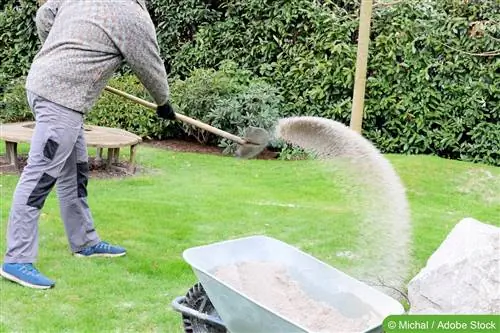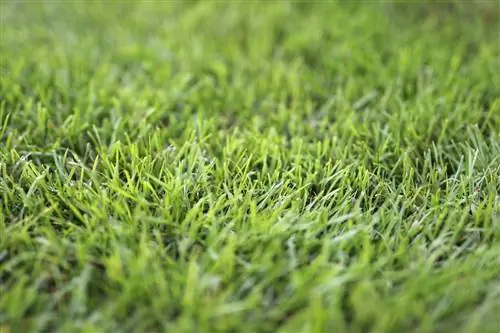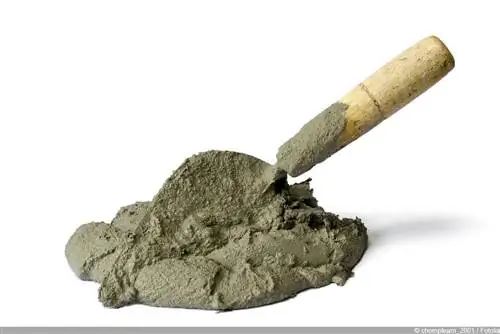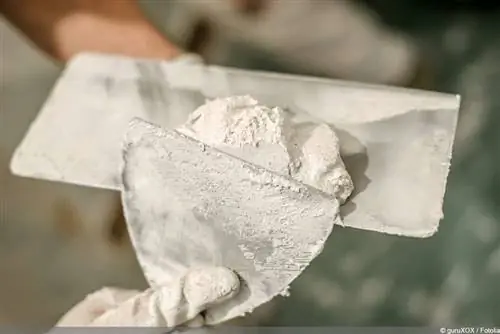- Author admin [email protected].
- Public 2023-12-17 03:39.
- Last modified 2025-01-24 12:45.
The lawn is the flagship of the garden. Sanding the lawn can effectively influence its appearance. However, there are a few things to keep in mind, as too much of it can damage the greenery. Read here how much sand you should apply per m² when sanding the lawn.
Why sand lawns?
A dense and lush green lawn needs loose and well-drained soil without waterlogging to grow. The top layer of soil should therefore always be 10 to 15 centimeters loose and airy. In very clayey and dense soils, weeds and moss can quickly gain a foothold and displace the grass plants. Sanding the lawn can help here. The advantages of this measure are
- Improving water absorption, holding power and air circulation
- improved cation exchange, i.e. accumulation of nutrients in the soil and delivery of them to the grass roots
- Prevention of waterlogging
- he althy root growth
- Higher resilience of the lawn
- Prevention of lawn diseases, weed and moss growth
- Removal of unevenness in the lawn
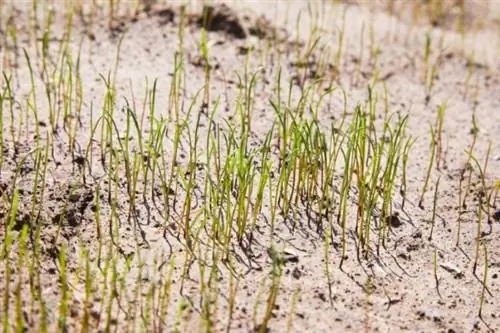
Sand can also be a good help when reseeding in bare areas. In this case, the seeds are mixed with sand. This brings the following benefits
- easy application
- reduces bird damage
- Provides protection against dehydration and strong sunlight
Note:
A little patience is required after sanding the lawn. After three to five years, the first successes will be visible, but only if you spread sand annually in the spring.
Dosing the sand precisely
Do not spread sand randomly on the lawn. Too much sand on the lawn causes major damage. The soil becomes lean and as a result the lawn plants dry out. How much sand you need to sand the lawn always depends on the type of soil present. Larger amounts of sand are necessary for heavy, clayey, loamy and heavily used lawns. In short:The more compacted, clay or loam-rich the soil is, the larger the amount of sand is required! A soil analysis can provide information about the soil condition. The first signs of heavily compacted soils are
- increased occurrence of thatch, moss, weeds
- bald spots
- brown-yellowish blades of grass
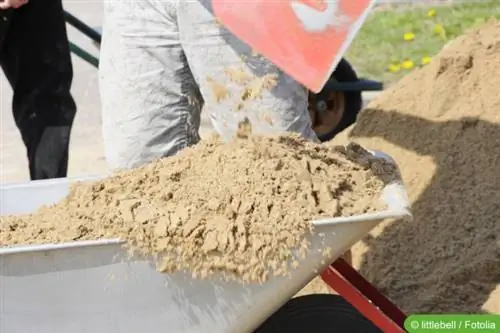
If the soil is in need, you should applya maximum of 10 liters of sand per square meter, regardless of the type of sand. As a rule, three to five liters are usually enough. Rules of thumb are
- after scarifying (moss and mulch removal) 2 to 3 l/m²
- after aerating (lawn aeration) 3 to 5 l/m²
Then spread the sand one to two centimeters thick on the lawn. The grass plants must not be completely covered. The tips of the blades of grass must still be visible.
Note:
No additional sand is necessary for sandy soils. The already loose soil structure prevents the occurrence of waterlogging and the resulting compaction of the soil.
Apply sand correctly
When sanding the lawn, it is not only important to know how much sand you need to apply, but also how to do it correctly. However, before you can spread the sand, you must first carry out some preparatory work. Two weeks before this measure, the lawn is fertilized so that it has enough strength for the next care measure. Then proceed as follows:
- Mow the lawn to a height of three centimeters.
- Remove lawn thatch by scarifying.
- Ideally, aerate afterwards.
- Distribute sand evenly over the lawn. To do this, use either a spreader or a sander. Can also be applied by hand with a shovel. Then spread sand with the back of a rake or pull a lawn squeegee flat over the area.
- Then water the lawn thoroughly so that the sand is flushed into the ground through the scarifying grooves or ventilation holes.
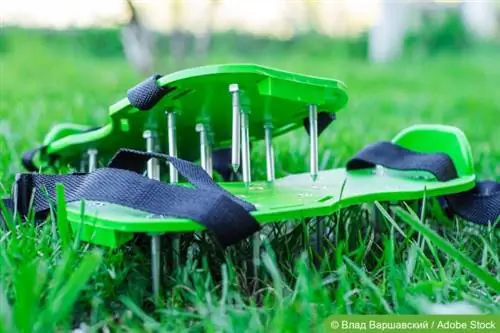
Tip:
Aerating the lawn can increase the effect of sanding. Holes are pierced into the lawn using an aerating fork, nail shoes or rollers. The sand then added results in much deeper soil aeration.
Frequently asked questions
When is the best time to sand the lawn?
In general, this measure should not be carried out during the summer months. During this time, the lawn is exposed to enough stress from heat waves. Sanding is ideal in spring between April and May, when the grass plants begin to grow and temperatures are no longer expected to be too low. Sanding is still possible in autumn, but then there should be no more hot periods.
How often is sand spreading necessary?
It always depends on the condition of the soil. Heavy and clayey soils should be sanded annually once in spring and possibly again in autumn. The situation is different with normal, well-drained and little-used lawns. Here it is sufficient to sand the lawn every two to three years.
Which sand is particularly suitable for sanding lawns?
The use of quartz sand with a grain size of 0.5 to 1.5 mm has proven successful. It is washed, so it is free of deposits such as silt or clay and does not contain any calcium compounds. It also has a fine, round-grained shape. This means it can spread well on the turf and in the ground. Under no circumstances should sharp-edged sand be used, as it prevents the grass plants from branching in the soil.
Can play sand also be used for sanding?
Yes and no. Play sand usually contains small amounts of clay and silt. These proportions are not very good for the lawn as the sand can quickly clump together. Therefore, play sand should not necessarily be the first choice. However, if it is washed and does not contain any additional ingredients such as clay etc., then it can be used.

